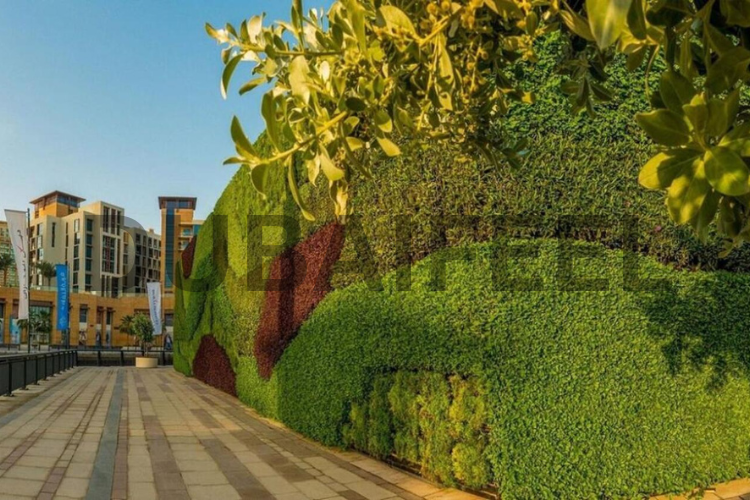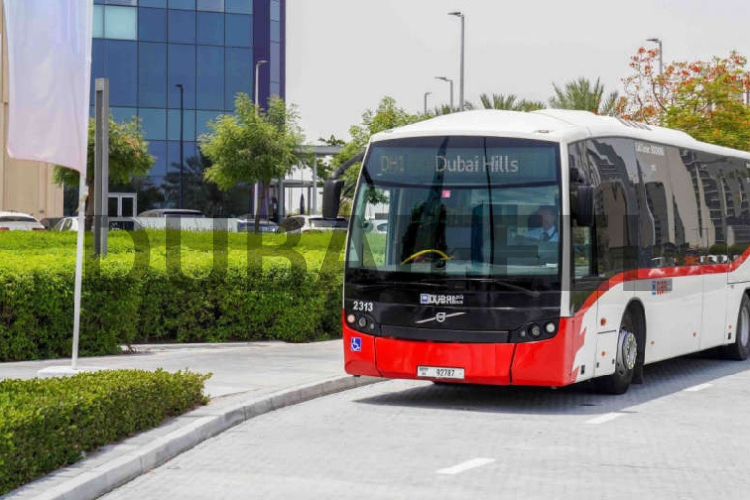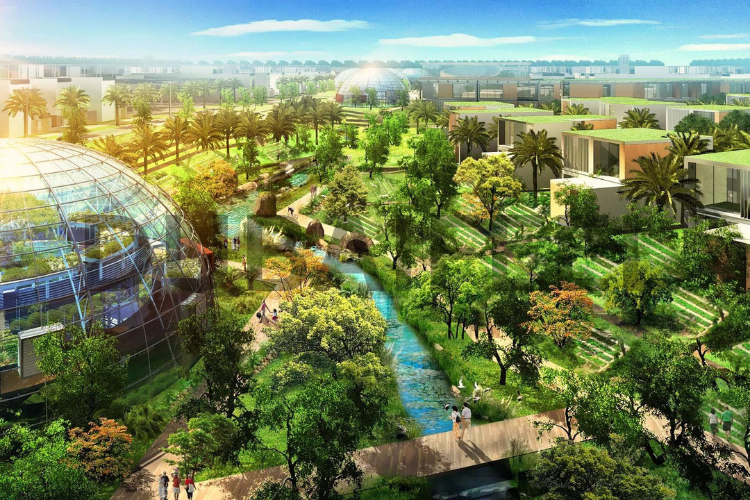Sustainability in Dubai faces several alarming challenges that must be addressed. From the city’s excessive water consumption and energy use to the environmental impact of rapid development, these issues pose significant risks. However, Dubai’s efforts to innovate and invest in green technologies offer a glimmer of hope. Balancing these urgent concerns with sustainable solutions will be crucial for the city’s future.
The city’s meteoric rise from a small trading port to a sprawling metropolis has come with significant environmental challenges, particularly regarding water scarcity. As a desert city with minimal natural freshwater resources, Dubai needs to manage its water supply sustainably. Water is a precious commodity in Dubai, where rainfall is scarce, and natural water sources are almost nonexistent. Dubai has made desalination its primary source of freshwater. Desalination plants remove salt from seawater and provide approximately 98% of the city’s potable water.
While this technology has supported Dubai’s growth, it has substantial environmental and sustainability challenges. One of the most significant concerns with desalination is its energy-intensive nature. The process requires vast energy to separate salt and other impurities from seawater. In Dubai, where energy production relies heavily on fossil fuels, this increases carbon emissions. The sustainability of this approach needs to be revised, as it contributes to global warming and further strains the environment.
As the water demand continues to rise, so does energy consumption, making it imperative for Dubai to explore more sustainable alternatives. Another critical aspect of water sustainability in Dubai is the efficient use and management of water resources. The city has one of the world’s highest per capita water consumption rates, driven by factors such as the extensive use of air conditioning, irrigation of green spaces, and the needs of the hospitality industry.
To promote sustainability, Dubai has implemented various initiatives aimed at reducing water consumption. These include empowering public awareness campaigns, introducing water-saving devices, and enforcing regulations that mandate treating wastewater for irrigation and landscaping. As the city’s population grows, so does the water demand. It puts immense pressure on the existing desalination infrastructure and raises concerns about the sustainability of relying so heavily on this energy-intensive process.
Dubai is exploring using renewable power sources to run desalination plants more sustainably to address this. By integrating renewable energy into the water production process, Dubai can reduce its carbon footprint and make strides toward a more sustainable future.
Moreover, sustainability in water management also involves addressing the environmental impact of desalination. The process produces a concentrated brine byproduct, often discharged into the ocean. This brine can harm marine ecosystems, disrupting the delicate balance of the Gulf’s waters. To enhance sustainability, research and development efforts are underway to reduce the environmental impact of desalination, such as by improving brine management practices and exploring alternative water sources like treated wastewater.
Water scarcity is one of the most pressing sustainability challenges facing Dubai. The city’s reliance on desalination to meet its water needs is both a solution and a problem, providing essential water resources but at a significant environmental cost. To ensure the sustainability of its water supply, Dubai must continue to innovate and invest in sustainable technologies, improve water efficiency, and reduce its reliance on fossil fuels. By prioritizing sustainability in its water management strategies, Dubai can secure its future in an increasingly water-scarce world while thriving as a global city.

Dubai’s rapid growth and development have led to significant energy consumption, mainly driven by its hot desert climate. The city’s reliance on fossil fuels for energy production is a substantial concern for sustainability. Air conditioning is not just a luxury but a necessity, contributing to the city’s high energy demand.
This heavy reliance on energy-intensive cooling systems, along with the needs of its vibrant tourism sector and ever-expanding infrastructure, makes sustainability a pressing issue in Dubai. Fossil fuels, particularly natural gas, dominate Dubai’s energy mix. The city’s dependence on these non-renewable resources has raised concerns about the long-term sustainability of its energy strategy. Fossil fuel combustion contributes significantly to greenhouse gas emissions, exacerbating global climate change and negatively impacting air quality.
As a city striving to position itself as a leader in innovation and forward-thinking development, Dubai recognizes the need to transition toward more sustainable energy sources. Efforts are underway to enhance sustainability in Dubai’s energy sector. The government has established ambitious goals to diversify its energy mix and expand the use of renewable energy. Despite these advancements, fossil fuels remain the dominant energy source in Dubai, and the path to full sustainability is complex.
Moreover, there is a need for greater public awareness and behaviour change to support energy efficiency and sustainability efforts. Initiatives such as promoting energy-efficient buildings, encouraging public transportation, and implementing innovative grid technologies are crucial to achieving sustainability. Dubai’s energy consumption is heavily influenced by its hot climate and the extensive use of air conditioning, making fossil fuels a primary energy source.
However, this reliance poses significant challenges to sustainability. At the same time, Dubai is making strides in increasing the use of renewable energy and implementing sustainability initiatives. Dubai can reduce its environmental impact by prioritizing sustainability and ensuring a more resilient energy future.
1 . Carbon Footprint and Sustainability in Dubai

Dubai’s rapid urbanization and development have come with a significant environmental cost, leading to a high carbon footprint. The city’s energy consumption, large-scale infrastructure projects, and heavy reliance on air travel all contribute to this issue. As Dubai continues positioning itself as a global destination for tourism and business, addressing its carbon footprint is essential for achieving long-term sustainability. One of the primary contributors to Dubai’s carbon footprint is its energy consumption.
The city’s hot climate necessitates extensive air conditioning, leading to high energy demands. As a result, the city’s carbon footprint grows, raising concerns about its sustainability. Large-scale infrastructure projects are another major factor in Dubai’s carbon footprint. The construction of iconic landmarks such as the Burj Khalifa, the world’s tallest building, and the Palm Jumeirah, an artificial archipelago, has required vast resources and energy. While showcasing Dubai’s architectural and engineering prowess, these projects also contribute to environmental degradation.
The materials used, the energy consumed during construction, and the ongoing maintenance of these structures all add to the city’s carbon emissions. Ensuring sustainability in future developments will require a focus on green building practices, using sustainable materials, and minimizing energy use throughout the lifecycle of such projects.
Air travel is also a significant contributor to bhttps://dubaisce.gov.ae/en/carbon-footprint/ As a central international hub, Dubai’s airports see millions of passengers yearly, with flights to and from the city contributing to global carbon emissions. The reliance on air travel for tourism, trade, and business further exacerbates the city’s environmental impact. Additionally, Dubai is exploring ways to promote more sustainable transportation options in the town, such as electric vehicles and expanded public transit systems.
Dubai’s high carbon footprint is a byproduct of its rapid growth and development. Energy consumption, large-scale construction projects, and reliance on air travel all contribute to this issue, making sustainability a key challenge for the city by continuing to invest in renewable energy, green building practices, and sustainable transportation. This commitment is essential for the environment and ensuring that Dubai remains a thriving and livable city for future generations.
Also read:4 Shopping Secrets: How to Score the Best Luxury Deals in Dubai
2 . Sustainability in Dubai and Loss of Biodiversity

The rapid urbanization and development that have transformed Dubai into a global metropolis have also had significant environmental repercussions, particularly concerning biodiversity. As the city expands, natural habitats are increasingly encroached upon, leading to biodiversity loss. One of the most visible impacts of Dubai’s development is the destruction of natural habitats, particularly along the coast.
The extensive dredging and land reclamation required for these projects have disrupted marine habitats, affecting coral reefs, seagrass beds, and mangroves. These ecosystems are crucial for maintaining biodiversity and supporting marine species, including fish, crustaceans, and sea turtles. The destruction of these habitats jeopardizes the survival of numerous species and weakens the overall resilience of aquatic ecosystems. In addition to marine ecosystems, terrestrial habitats in Dubai have also been affected by urbanization.
The city’s expansion into desert areas has led to habitat fragmentation, making it challenging for wildlife to thrive. However, Dubai’s sustainability efforts increasingly recognize the importance of preserving biodiversity. Initiatives such as establishing protected areas, conservation programs, and efforts to restore damaged ecosystems are steps in the right direction. For example, creating marine protected areas aims to protect essential habitats and encourage the recovery of endangered species. These positive steps provide hope for the future of Dubai’s environment and encourage support for these initiatives.
Additionally, urban planning in Dubai is beginning to incorporate sustainability principles, focusing on minimizing habitat destruction and incorporating green spaces into the urban landscape. It includes ensuring that future projects are designed with biodiversity in mind, minimizing their impact on natural habitats. By prioritizing biodiversity conservation as part of its sustainability strategy, Dubai can mitigate the environmental impact of its rapid development and ensure that its natural heritage is mainly for future generations.
3. Air Pollution and Sustainability in Dubai

Air pollution has become a significant concern as Dubai grows and develops rapidly. The city’s expanding traffic and industrial activities contribute substantially to the problem, impacting air quality and posing challenges to sustainability. The surge in vehicle numbers is one of Dubai’s primary drivers of air pollution. With the city’s booming population and increased economic activity, there has been a notable rise in the number of cars and trucks on the roads.
This increase in traffic leads to higher levels of emissions from combustion engines, including pollutants such as nitrogen oxides (NOx), carbon monoxide (CO), and c (PM). These pollutants not only degrade air quality but also contribute to health problems such as respiratory and cardiovascular issues. The sustainability of urban living in Dubai depends on reducing these emissions and improving air quality.
Dubai’s economic expansion has increased industrial output, with factories and construction sites contributing to airborne pollutants. As industries grow, finding sustainable solutions to control and reduce emissions becomes imperative. To combat air pollution, Dubai has implemented several measures aimed at improving sustainability. The city has established air quality monitoring systems to track pollutant levels and identify sources of pollution.
Additionally, regulatory measures must control emissions from vehicles and industrial sources. For example, Dubai has adopted stricter vehicle emission standards and invested in cleaner technologies for public transportation. Despite these efforts, ongoing challenges remain. Rising and continued industrial activities pose persistent obstacles to achieving optimal air quality. Dubai needs to accelerate the adoption of alternative energy sources to further enhance sustainability and energy efficiency across all sectors.
Furthermore, expanding green spaces within the city can contribute to sustainability by improving air quality. Trees and vegetation act as natural filters, absorbing pollutants and providing cleaner air. Integrating green infrastructure into urban planning can help mitigate the effects of pollution and support a healthier environment. Air pollution is a growing concern in Dubai due to increasing traffic and industrial activities.
Addressing this issue is essential for achieving sustainability and ensuring residents’ high quality of life. By continuing to implement and enhance measures to control emissions, invest in cleaner technologies, and promote green infrastructure, Dubai can work towards reducing air pollution and advancing its sustainability goals.
4. Embracing Sustainability in Dubai: Eco-Friendly Hotels, Attractions, and Transportation

Dubai is renowned for its opulent lifestyle, cutting-edge technology, and vibrant artistic scene, making it a top destination for travellers worldwide. However, with the growing influx of visitors, the city has to enhance its environmental efforts. This article explores Dubai’s dedication to sustainability by highlighting eco-friendly hotels, attractions, and transportation options, demonstrating how visitors can enjoy the city’s splendour while minimizing their environmental impact.
- Sustainable Stays: Eco-Friendly Hotels in Dubai
Dubai boasts a range of eco-friendly hotels that combine luxury with environmental stewardship. These hotels prioritize sustainability through various green practices, offering visitors a comfortable and eco-conscious stay.
Also read:8 Hidden Gems in Dubai Recommended by Locals (And a Few to Consider Skipping)
- Jumeirah Creek Hotel: A Green Oasis
Jumeirah Creek Hotel exemplifies sustainability in Dubai’s hospitality sector. This eco-friendly hotel has earned the Green Global Label certification for its unwavering commitment to environmental responsibility. Additionally, Jumeirah Creek Hotel employs water-saving appliances like low-flow taps and advanced irrigation systems to minimize water wastage.
The hotel’s robust recycling program further contributes to its sustainability by reducing waste and promoting resource conservation. One of the hotel’s standout features is its lush, green garden environment, which enhances its appeal and creates a serene atmosphere for guests. This natural setting provides a pleasant retreat and supports the hotel’s eco-friendly initiatives by improving air quality and promoting a connection with nature. Jumeirah Creek Hotel’s dedication to sustainability extends to every aspect of its operations, ensuring guests enjoy a luxurious and environmentally responsible stay.
- JA Ocean View Hotel: Sustainable Seaside Luxury
Along the Walk at Jumeirah Beach Residence, JA Ocean View Hotel is another prime example of sustainability in Dubai. The hotel has received the Green Global Certificate for its comprehensive environmental efforts. JA Ocean View Hotel implements various energy-saving technologies, including LED lighting, motion sensors, and advanced climate control systems. These measures help reduce electricity use and minimize the hotel’s carbon footprint.
Waste management is a crucial component of the hotel’s sustainability strategy. JA Ocean View Hotel has adopted extensive recycling programs, reduced single-use plastics, and implemented practices to minimize food waste. By choosing JA Ocean View Hotel, guests can enjoy stunning sea views while contributing to a more sustainable future.
- The Green Planet Dubai: A Tropical Paradise
The Green Planet Dubai, one of the world’s largest artificial rainforests, is a prime example of eco-friendly tourism. Located within the City Walk shopping destination, this impressive dome houses over 3,000 species, including reptiles, birds, and plants. The Green Planet’s design incorporates sustainable practices, such as using mirrors to reflect natural light and mist machines to maintain humidity levels.
These features reduce the need for artificial lighting and energy-intensive climate control systems. Visitors can explore the biodome’s various levels, including a captivating flooded area designed as an aquarium, and learn about different species and their habitats. The Green Planet’s commitment to sustainability extends to its construction and operation.
- Dubai Safari Park: A Hub of Conservation
Dubai Safari Park spans 119 hectares and is home to over 2,500 animals from around the globe. The park prioritizes sustainability by using solar power to meet its energy needs, reducing reliance on non-renewable resources. Additionally, Dubai Safari Park implements extensive recycling programs and promotes waste reduction through recycling initiatives.
Sustainable Transportation: Eco-Friendly Travel Options
- RTA Buses and Trams: Sustainable City Navigation
Dubai’s RTA buses and trams are sustainable. The extensive bus network covers 119 internal lines and 35 connections with the Dubai Metro, while the tram system spans 10.6 kilometres and connects with the Metro and Palm Monorail. Both modes of transportation utilize NOL cards for fare payment, promoting convenience and reducing the environmental impact of cash transactions.

Dubai’s dedication to sustainability is evident in its eco-friendly hotels, attractions, and transportation options. By integrating green practices and promoting environmental awareness, Dubai allows visitors to explore the city while minimizing their ecological footprint. Whether staying in a sustainable hotel, visiting an eco-friendly attraction, or using public transportation, travellers can enjoy Dubai’s luxury and innovation while supporting the city’s sustainability efforts.
Also read: Heritage in Dubai: 5 Ways Cultural Attractions Both Entice and Divide Tourists

